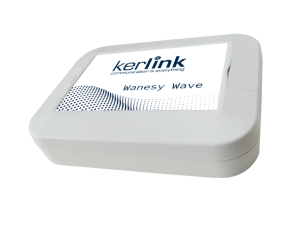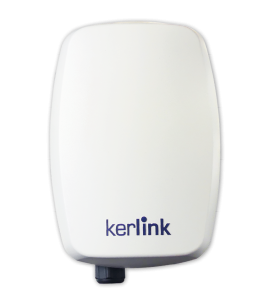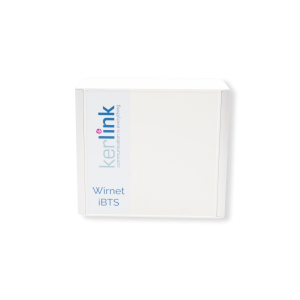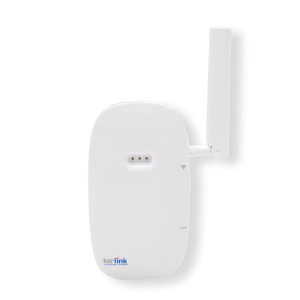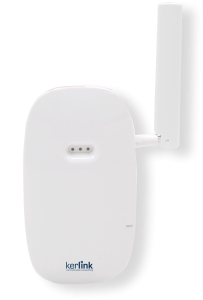Goods & Assets Monitoring & Tracking
Assets and Goods Under Constant Control with IoT Adoption
Goods Monitoring & Tracking

Lack of visibility and traceability into the condition and location of goods during transport and upon delivery is a key stake for freight owners and transporters: operating time can increase due to time spent inn searching for missing freight; revenue can suffer if goods cannot be located or are damaged during transport or upon delivery; lost or stolen freight can have an impact on revenue, on supply chain performance and on end-customer satisfaction. This is all the more critical for valuable goods or food that cannot use conventional means. Cold chain transportation holds a specific place to securely convey perishable goods and environment-sensitive products, like vaccines or pharmaceutics, that needs air-conditioned containers to retain their characteristics, freshness and quality throughout the journey. Humidity and temperature can also be really harmful to these categories of goods and should be constantly monitored to avoid any damage and reduce wastage and loss. Refrigerated containers (aka reefers) are widely used nowadays, to ship goods at long distance. FAO[1] and WRI[2] thus estimate that each year, approximately one-third of all food produced for human consumption in the world is lost or wasted, one of the key reasons being the poor transportation conditions and the lack of control of storage quality. 10 to 25% of total liquor importation to the US is spoiled due to high temperature during transit. And 20% of drugs worldwide are substandard and eliminated due to poor temperature condition during shipment. Apart from damaged goods, shipment companies, suppliers, transporters may also face reputational damage and insurance premium increase due to the potential risks induced by human errors – no continuous monitoring and inspection – or technical failure – cooling or monitoring system breakdown.
IoT sensors and devices can help track goods location and motion, monitor the condition of the freight and trace any variation and issue. IoT sensors, using humidity, temperature, impact or ambient light intensity detection, can raise instant alerts in case specific thresholds are reached. For example, temperature can be measured to exact degree and compared with acceptable norms and legally required levels for cold chain in any given transport. IoT sensors can help manage the storage, shipping, transportation and distribution of products that need a temperature-controlled environment and help address any potential errors quickly, before it is too late. The same way, valuable goods can be tracked with geofencing capabilities and an alert can be sent in case the goods exit predefined boundaries, with the option of activating lockdown mode and tracking to quickly recover them. Food, liquor, valuable goods, pharmaceuticals, vaccines and other perishable products can reach their destination undamaged and perfectly traced.
Leveraging Kerlink industrial-grade, robust and versatile IoT connectivity, powered by LoRaWAN technology, can help implement the requested tracking and monitoring solutions throughout the journey. Combined with GPS-enabled IoT trackers or using LoRaWAN network-based native geolocation capabilities, goods can be quickly tracked and located. LoRaWAN-enabled IoT sensors can collect key insights for pharma, containers, cold rooms and freezer rooms to ensure the visibility, traceability and security of transport conditions. Deploying long-range, deep-indoor and highly reliable LoRaWAN IoT private networks in cold transport venues, warehouses, food markets or restaurants ensures end-to-end control on goods conditions to reduce wastage and loss.
[1] http://www.fao.org/3/i3347e/i3347e.pdf
[2] https://www.wri.org/publication/reducing-food-loss-and-waste
Assets Monitoring &Tracking
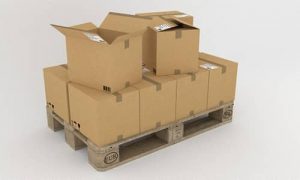
Asset-intensive industries like manufacturing, supply chain, airports, harbors, industrial machinery, oil & gas, mining, energy and utilities are constantly looking for ways to create competitive edge to make the optimal use of their industrial equipment. These industries still have limited control over their assets, face sudden machine or appliance unplanned downtime or failure, experience low plant velocity and throughput, sometimes even lose job-critical data and are unable to meet maximum asset productivity. Maintenance itself might be challenging: operators need to cope with low overall equipment effectiveness (OEE) and machine availability, have to bear high spares inventory and maintenance costs, face poor first-pass-yield (FPY) and quality metrics, must rework parts caused by out-of-spec machine and finally miss delivery dates, without being able to identify failures root causes… The same way, tools, expensive mobile equipment, storage / transport / handling elements – like for example pallets, rolls, trolleys, trailers, tanks… – might be scattered throughout the factory, or between different sites, and then difficult to trace. Companies are thus looking for competitive and effective solutions to help them monitor, manage, trace and locate their assets remotely, in near real-time, to optimize asset workability, increase production throughput and track return on assets (ROA) and overall return on investment (ROI).
IoT sensors and devices connected to assets, powered by a robust connectivity and combined with relevant workflows, can continuously collect relevant operational data and provide them to a central platform that will generate actionable and timely information for plants supervisors and operators. Thanks to IoT, industries can monitor, measure, quantify and analyze raw data to improve asset health, availability and utilization. For example, IoT sensors can monitor machine performance compared to the normal patterns, measure KPIs to detect anomalies and request settings adjustment or predict equipment failure, thus avoiding production interruption, rework or loss. These data can help to profile machine health and to design smart predictive maintenance to deliver additional value to traditional maintenance methods. IoT sensors can instantly help to locate and track, indoor and outdoor, missing assets or parts to maximize their availability, thus avoiding production interruption and improving operational efficiency.
Leveraging Kerlink industrial-grade IoT connectivity, powered by LoRaWAN technology, can help to connect IoT sensors, devices and equipment to increase OEE, reduce unplanned downtime, increased throughput, reduce maintenance costs, improve quality and on-time delivery, for better customer satisfaction. Using GPS-enabled IoT trackers or LoRaWAN network-based native geolocation capabilities for outdoor tracking, industries can reliably and cost-effectively track their assets in wide areas, such as port, airport or storage areas for finished products (vehicles, equipment…). In addition, using Bluetooth Low Energy (BLE) -enabled and battery-powered tags for indoor positioning, industries can benefit from a inexpensive IoT solution to track, locate and manage their assets, even in challenging RF environments. Kerlink robust and performant IoT connectivity solutions are not only relevant for industries willing to improve their day-to-day operations and get a better control on their assets, it can also be relevant for suppliers willing to change their business model and to deliver value-added services with the equipment and machinery they sell, for example based on subscription for ongoing performance, uptime or maintenance efficiency.
Assets Inventory
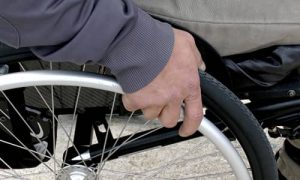
Asset inventory is a direct value-added service on top of asset tracking. Transportation hubs, education campuses, leasing companies, construction sites, healthcare centers or agricultural exploitations, among others, are all using costly equipment and tools that they must constantly track and locate. Airports and train stations have for example to keep track of commonly used equipment like trolleys, wheel chairs or disinfecting gel dispensers to know where they are and how to get them when necessary. Universities and schools must make sure that all educative equipment, like expensive laboratory material or tools, stay within the campus area and are not stolen or brought in locations in which they should not be used. Leasing companies must keep record of the leased equipment, know where it is and how it is used since they will generate customer invoicing based on actual usage: this is typically the case for copiers, vending machines, construction equipment, professional tools or building site cabins, to name a few. The same way, hospitals, clinics and nursing homes must make sure that they constantly have an updated vision and location of their assets, from the most expensive and critical equipment – like monitoring machines, syringe pumps, ultrasound machines, defibrillators, surgical tools or respiratory assistance machines – to the most common but convenient assets – like beds, rehabilitation equipment, wheelchairs or stretchers -. Construction sites or extraction sites on their side must keep track of a wide inventory of materials, tools and equipment on site and in their warehouses so that they can efficiently manage operations. Agriculture various production sites – for example farms, livestock stables, greenhouses – also have a lot of assets like machinery, equipment and tools to track and to monitor on a broad area.
IoT sensors and devices, like battery-powered RFID or Bluetooth (BLE) -enabled tags, combined with IoT beacons and IoT getaways, can help to deploy appropriate indoor and outdoor tracking solutions to constantly keep trace of any asset, quickly get a visibility on detailed inventory and produce a detailed mapping of assets location in near-real time. IoT helps to create an accurate asset inventory and to keep it up-to-date with limited effort and time. Indoor location, outdoor tracking and geofencing can be easily implemented with IoT tags and sensors so as to keep an eye on assets and be instantly informed if an asset is leaving its authorized area of use (in case of indelicate use or theft). This automated inventory can make operations smoother, while reducing the risk of human errors, more particularly in environments where urgency, deadlines, risks or the size of the premises are important. This can also help to improve operations flows by enabling a better visibility on assets movements – which items are entering / leaving a specific area – or their location at a specific time – in line with the planning and resource allocation or not -.
Leveraging Kerlink industrial-grade IoT asset tracking, powered by Bluetooth and LoRaWAN technologies, can help to connect tags to simplify and speed-up assets inventory to optimize lead time, keep constant visibility on critical assets, avoid bottlenecks in daily operations and protect invested capital. Kerlink robust, performant and reliable IoT connectivity solutions are ideal to design private IoT networks for assets indoor / outdoor location and tracking, in any type of RF environment; its low-power, wide-area and deep-indoor coverage makes it the ideal versatile connectivity to power various use cases on the same IoT network. Monitoring quantities, getting location and tracking movements for assets inventory is made easy and cost-effective with LoRaWAN connectivity.



